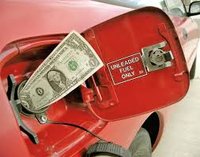
| (BPT) – Your right foot holds the key to better gas mileage. How aggressively you apply the gas or brakes affects how frequently you have to stop for fuel. And driving style is even more important with today’s cars as the spread between a vehicle’s best and worst mileage may be 10 mpg or more. Here are some tips you can use to improve your gas mileage during the miles ahead, using your car’s technology. * When you are in the driver’s seat be aware of the vehicle’s numerous computers. “Many newer cars have body, brake and transmission computers as well as engine computers,” says Tom Taylor, engineer and vice president of auto parts retailer RockAuto.com. These computers adjust vehicle systems and performance. Gas will be wasted whenever you do something that misleads a computer into thinking you are not driving to maximize mileage. * Aggressive steering, acceleration or braking tells your car that gas mileage is not your top priority. The car’s computers calculate you must be having fun, avoiding a hazard or climbing a steep grade. The computer might adjust the transmission so the engine speeds up, activate the brake calipers on one or two wheels to avoid a skid or increase the flow of fuel and air in anticipation of the need for even harder acceleration. * A hybrid car might turn on the gasoline engine once it receives input that the driver needs performance instead of gas mileage. Many modern engines deactivate cylinders to save gas. Cylinders shut down so a V8 becomes a V4. The computer reactivates all the cylinders when the driver’s foot presses harder on the gas pedal. If the car continues to get mixed signals from the driver, it may remain in performance modes and continue to use more gas than necessary. * Many drivers also mistakenly believe they can do a better job of saving gas than the computer. New cars frequently come with paddle shifters on the steering wheel so the driver can control the transmission. A driver might decide they will shift the gears manually to save gas. Modern transmissions may have eight or more gears. Meanwhile, continuously variable transmissions (CVT) have no conventional gears at all. The computers will always maintain some control of the transmission. Using the paddle shifters leads the computer to assume the driver wants to have fun or is driving in challenging conditions. While the paddle shifters are in use, the computers may completely turn off engine cylinder deactivation. This means all of the cylinders will be using gas all the time. The computers may maintain higher engine speeds and use more low gears to enhance performance. * Shifting into neutral and coasting does not save gas. When the vehicle is coasting with the transmission in gear, the computers turn off the fuel injectors until the engine slows to near idle speed. The engine is still turning over but using no gasoline. “Turning off the fuel injectors means the drivetrain is turning the engine rather than the engine turning the drivetrain,” says RockAuto.com’s Taylor. “This actually helps slow the vehicle and slightly reduces brake pad wear when coming to a stop.” Some common-sense fuel saving tips are still valid. Follow the maintenance schedule outlined in the owner’s manual and avoid hauling unnecessary weight in the trunk. Tires should be kept inflated, but air pressure is something the computers now also help monitor. “Cars in the near future are likely to be able to inflate their own tires rather than just warning the driver if the sensors detect that pressure is low,” says Taylor. A recent EPA report states that vehicles sold in the U.S. attained a new fuel-economy record of 23.6 mpg for model year 2012. Impressive, but vehicle manufacturers need to more than double that to meet a regulatory goal of 54.5 mpg by 2025. Expect to find all sorts of new technology and materials in future cars. To maximize gasoline mileage, just drive smoothly and let the computers do their work. |










